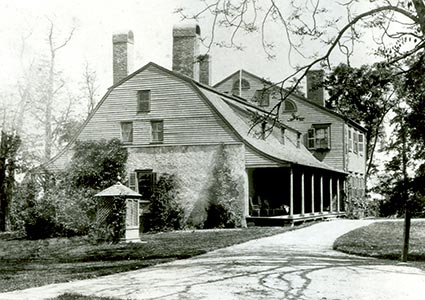
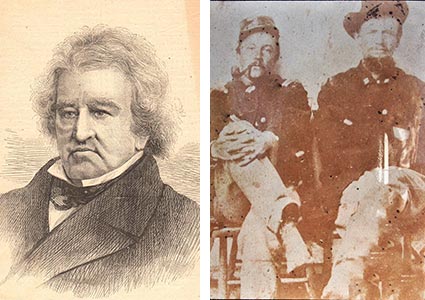
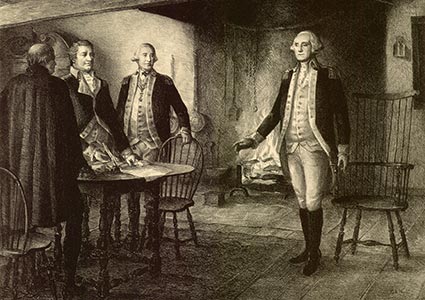
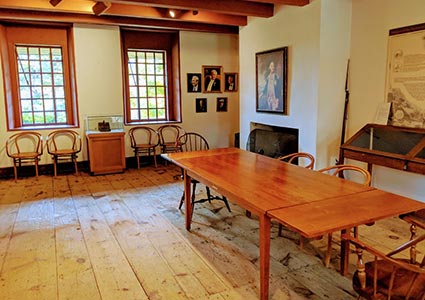
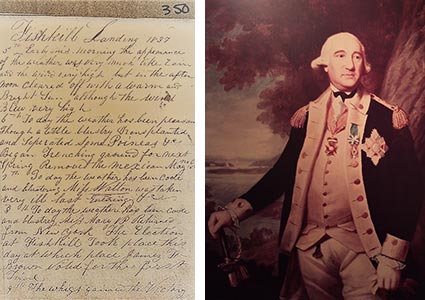
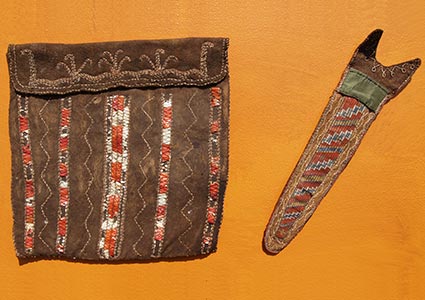
The Wappinger People
Survey archaeology done at Mount Gulian indicates that the Mount Gulian site had a long history of seasonal occupation by the ancestors of the Wappinger Native Americans. Native Americans lived intermittently, in seasonal encampments on the property from around 8,000 BP (Before the Present). The camps were occupied into the "contact period" with the Dutch and English colonizers in the early 1600’s.
The Verplanck Family
Mount Gulian is the Hudson Valley colonial homestead of the Verplanck family (aka Planck or VerPlancken). Research from 2020 into Dutch passenger lists pinpoint Jacob Albertsen Planck, from Edam, Holland, arriving in New Amsterdam on the ship Eendracht (Unity) in 1634, likely along with Abraham Isaac Verplanck, the patriarch of the original American branches of Verplancks.
The Society of the Cincinnati
The Society of the Cincinnati is an organization that is as old and as venerable as the American Republic. Composed of living descendants of eligible commissioned officers of the Continental Army and Navy, as well as descendants of commissioned officers of the French Army and Navy who served during the Revolutionary War (1775-1783), the Society has 14 constituent societies. Each state society is composed of direct descendants of officers who served in their respective original 13 States' armed forces, and one society in France, whose help ensured our victory in the American Revolution.
General Von Steuben
From 1782-1783, patriot General Friedrich Von Steuben was headquartered at Mount Gulian, close to the Fishkill Barracks and Supply Depot and right across the Hudson River from Washington’s Headquarters in Newburgh. While at Mount Gulian "The Baron", as he was often called, learned of the signing of the Treaty of Paris, ending the Revolutionary War and giving the new nation total independence from England. Often a footnote in history, General Von Steuben, a Prussian (German) immigrant, emerged from military obscurity in Europe to become an important but unsung hero of the Revolutionary War, having a lasting impact on the American Army and our nation’s history.
James F. Brown
Of all the many personalities connected with Mount Gulian and the Verplanck family and homestead, few have led a life as unique and as fully documented as James F. Brown. Born a slave as Anthony Fisher on a farm in Fredericktown MD around 1793, James F. Brown escaped from bondage by going north to freedom in New York City. From 1827 until the mid-1860’s he kept a journal about everyday life in Dutchess County NY as a free man and trusted employee, working for the Verplanck family as an important member of the household. The journals of James F. Brown are now housed at the NY Historical Society in Manhattan, with selected transcripts available at Mount Gulian.
Captain Robert Newlin Verplanck
Robert Newlin (R.N.) Verplanck was born on Nov. 18, 1842 at Mount Gulian, to William S. Verplanck and Anne Biddle (Newlin) Verplanck. During his boyhood, the United States was a house divided over the issues of slavery and states’ rights. Young Robert was a bright man coming from a family of great privilege, graduating from the prestigious Poughkeepsie Collegiate School, a private boy’s school, in 1858. Growing up at Mount Gulian, he often came into contact with Dutchess County’s small population of free Blacks, many of whom were skilled laborers and craftsmen in the area. James F. Brown, a freed escaped slave from Maryland, was Mount Gulian’s master gardener and trusted property manager throughout Robert’s early life.

